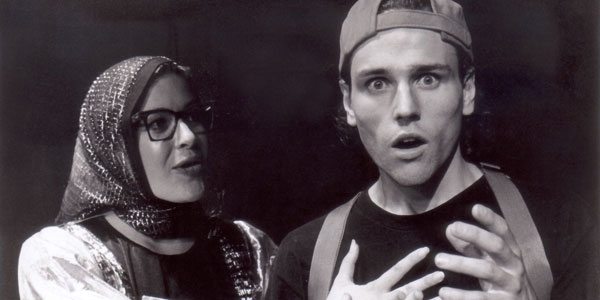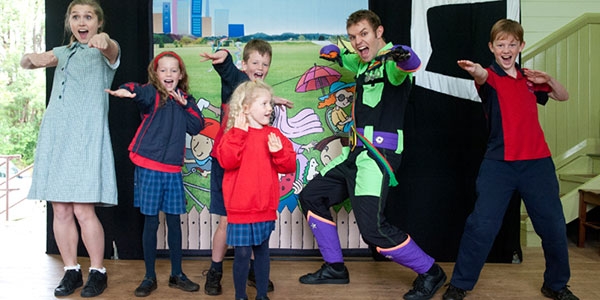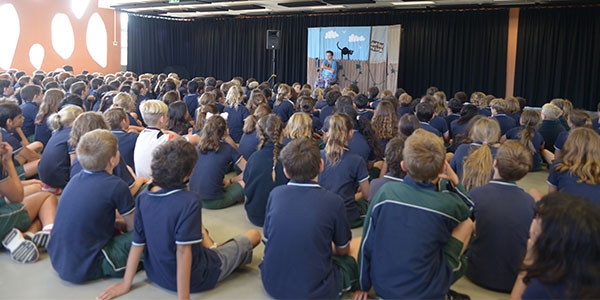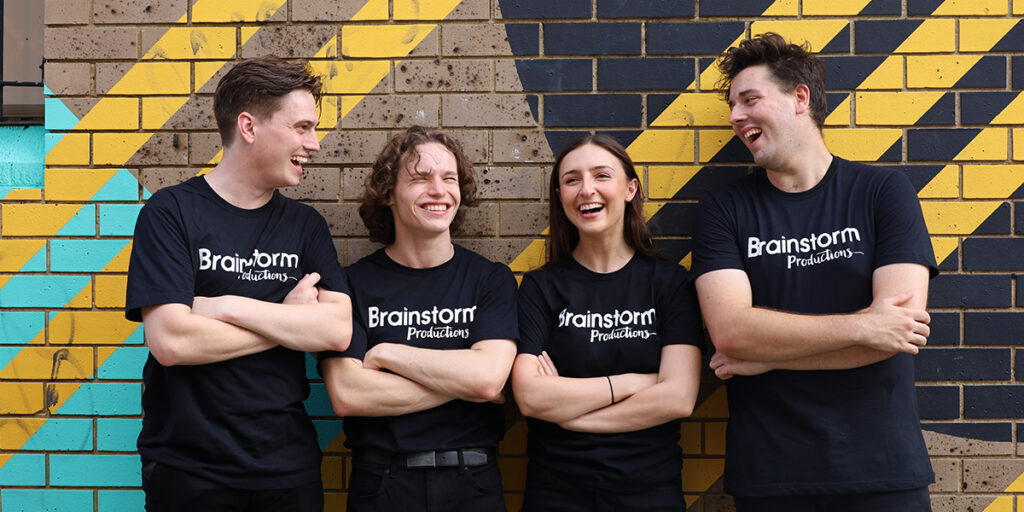Brainstorm Productions’ travelling theatre groups for schools have been captivating hundreds of thousands of children across Australia for thirty years. Here’s why.
“Children need art and stories and poems and music as much as they need love and food and fresh air and play,” says Philip Pullman, children’s author and winner of the Astrid Lindgren Memorial Award.
Picture books, and later, fiction form the bedrock of our childhood. Many of us not only remember the exact picture from a favourite book we read before bed as a child, we remember the thoughts and emotions we experienced at that time. Picking up the book years later is like looking into a crystal ball, and being sucked back into our past. It’s a direct link to who we were as kids.
Likewise, we hear a song on the radio we haven’t listened to since childhood, and we can recall every word, and can anticipate the next note.
Theatre is the ultimate immersive art form, targeting every sense simultaneously. It makes complete sense then that the only memory I have of the Year Two split classroom is sitting in the audience at Ross Hill Public School, in Inverell, watching Brainstorm Productions’ H-Team. My memory typically isn’t that great, yet I remember the buttery colour of the room. Where I was sitting in relation to the rest of the kids. Where the teachers stood. The bright colours the actors wore. The words they spoke. The tunes they sang. How I felt at the time. Just as you recall key details about the absolutely best Christmas you ever had as a kid, Brainstorm’s primary school productions leave a strong imprint on your memory.
For thirty years now, Brainstorm Productions teams have been travelling to regional schools from Cairns to Hobart and across to Adelaide. Every year, 350,000 children sit on the floor completely immersed in the school shows. They take in the music. They take in the words. They take in the message. And even if they forget to tell their parents every detail later that day, no doubt that experience has made such a deep impression, twenty years from now they will be able to teleport back to that moment, and induce thoughts and emotions experienced back in primary school. Many actors who audition for Brainstorm Productions’ school shows were once a member of a Brainstorm audience. Other audience members have been inspired to pursue careers as directors, writers and performers.

(1997 – Ben & Chloe)
The immersive experience of theatre in education is key to the success of Brainstorm Productions’ school shows. Unlike reading a book, or listening to a song, theatre gets you at every level.
Children, like adults, generally have different learning strengths. There are four commonly identified learning styles:
• Visual (spatial): a preference for images, gestures and spatial learning
• Aural (auditory-musical): a preference for learning through music and song
• Verbal (linguistic): a preference for learning through words and voice
• Physical (kinesthetic): a preference for learning through body movement and touch.
Although we may use all learning styles in combination, most of us have a preference for one style over others.
Theatre in education, then, can carry a message and leave a strong imprint on such vast audiences simply because it does utilise all four learning styles.
The sets and costumes are designed to visually appeal to a young audience. They are colourful, memorable, and unique and reflect the story.
Brainstorm Productions spend many months composing music for the plays, which resonates with the story. We engage acclaimed music composers, who also write for television, and have a thorough understanding of how to make memorable music.
Our productions pivot on the story, and the dialogue we use is the base ingredient for telling that story. Our plays also appeal to children who learn best through linguistics. We don’t need to spell out the message for students; the take-home educational point is transferred through relatable dialogue.
Finally, our plays are intensely physical. One of the things we are looking for when auditioning new actors is physicality. We spent months choreographing each play. Our actors need to be physically strong and fit to keep up with the pace of each school show, and the schedule of working in travelling theatre groups for schools. And our actors often involve young audiences in the story. Children are asked up on stage to follow dance moves, and help characters achieve their goals. This physical participation has immeasurable impacts on young audiences.

Primary school productions like the H-Team have been captivating primary school audiences now for thirty years. No doubt they will keep holding young attention spans across the country for many more years to come.




